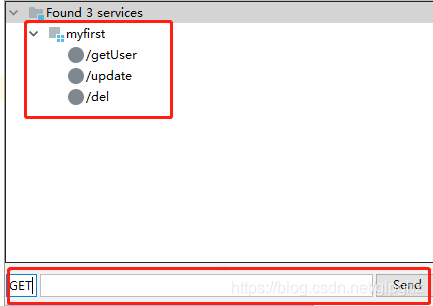Spring Boot——开发热部署及常用工具
本文共 1054 字,大约阅读时间需要 3 分钟。
Spring Boot——开发热部署及常用工具
一、热部署
在开发中我们修改一个Java文件后往往需要重启应用,这导致花费了大量的时间,我们希望在不重启应用的情况下,程序可以自动部署(热部署)。实现热部署,有以下四种情况:
1、模板引擎
- 在Spring Boot中开发情况下禁用模板引擎的缓存cache
spring.thymeleaf.cache=false
- 页面模板改变ctrl+F9可以重新编译当前页面并生效
2、Spring Boot Devtools
(1)引入依赖
org.springframework.boot spring-boot-devtools
(2)IDEA使用ctrl+F9
- 在没有引入Devtools时,使用ctrl+F9重新编译,只能使编译的文件发生变化,但是并不能影响正在运行的工程。
- 引入Devtools后,使用ctrl+F9重新编译,当前运行的工程也会受到影响。
注意:
Intellij IEDA和Eclipse不同,Eclipse设置了自动编译之后,修改类它会自动编译,而IDEA在非RUN或DEBUG情况下才会自动编译(前提是你已经设置了Auto-Compile)。- 设置自动编译(settings-compiler-make project automatically)
- ctrl+shift+alt+/(maintenance)
- 勾选compiler.automake.allow.when.app.running
设置 IDEA 的⾃动编译;

设置 IDEA 运⾏⾃动运⾏
快捷键:Shift+Ctrl+Alt+/ 进入Registry,勾选 compiler.automake.allow.when.app.running
二、RestfulToolkit
- 可以看到项⽬中所有的 Restful 接⼝,也就是所有使⽤了@RequestMapping 的⽅法,只要使⽤了此注解的⽅法,都可以被⽤户直接调⽤到。
- 可以模拟(HTTP)请求,这样连 Postman都可以省了。
在plugin中在线安装RestfulToolkit后重启Idea.

三、Save Actions——格式化
Save Actions插件主要用来自动对齐、自动导包、自动括号补全;
在plugins中加载Save Actions插件,后进行重启,
安装完后,需要在settions中配置 Save Actions:

转载地址:http://zjnwz.baihongyu.com/
你可能感兴趣的文章
nginx报错:the “ssl“ parameter requires ngx_http_ssl_module in /usr/local/nginx/conf/nginx.conf:128
查看>>
nginx报错:the “ssl“ parameter requires ngx_http_ssl_module in usrlocalnginxconfnginx.conf128
查看>>
nginx日志分割并定期删除
查看>>
Nginx日志分析系统---ElasticStack(ELK)工作笔记001
查看>>
Nginx映射本地json文件,配置解决浏览器跨域问题,提供前端get请求模拟数据
查看>>
Nginx映射本地静态资源时,浏览器提示跨域问题解决
查看>>
nginx最最最详细教程来了
查看>>
Nginx服务器---正向代理
查看>>
Nginx服务器上安装SSL证书
查看>>
Nginx服务器基本配置
查看>>
Nginx服务器的安装
查看>>
Nginx标准配置文件(包括反向代理、大文件上传、Https证书配置、文件预览等)
查看>>
Nginx模块 ngx_http_limit_conn_module 限制连接数
查看>>
Nginx模块 ngx_http_limit_req_module 限制请求速率
查看>>
nginx添加允许跨域header头
查看>>
nginx添加模块与https支持
查看>>
nginx状态监控
查看>>
Nginx用户认证
查看>>
Nginx的location匹配规则的关键问题详解
查看>>
Nginx的Rewrite正则表达式,匹配非某单词
查看>>